Art & Exhibitions
A First-of-Its-Kind Show Decodes the Mythical Motifs of the Chinese Bronze Age
San Francisco’s Asian Art Museum is showcasing artifacts adorned with phoenixes, raptors, and dragons.
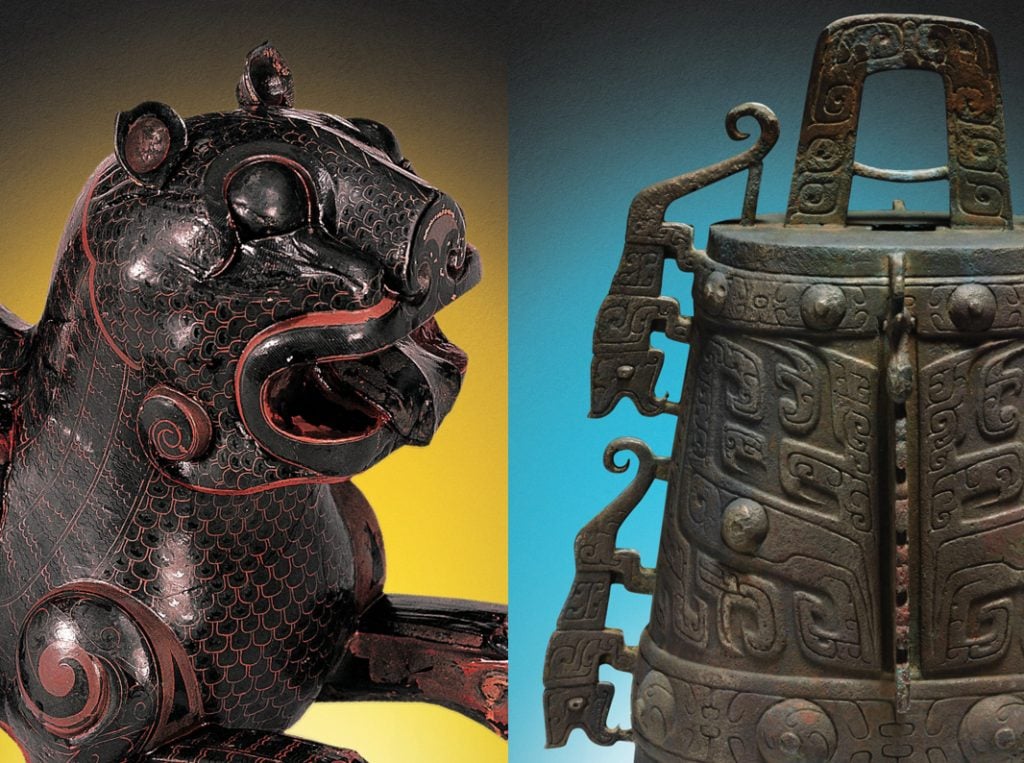
Have you ever wondered why Chinese visual culture is full of images of dragons, phoenixes and other mythical creatures? Archaeologists certainly have. For centuries, they searched in vain for their origins in the country’s vast but fractured archeological record.
Relatively recent discoveries of artifacts from the Zhou dynasty, an ancient state that predates the Qin dynasty that unified China, provided answers, and now they will be going on display at an exhibition at the Asian Art Museum in San Francisco titled “Phoenix Kingdoms: The Last Splendor of China’s Bronze Age.”
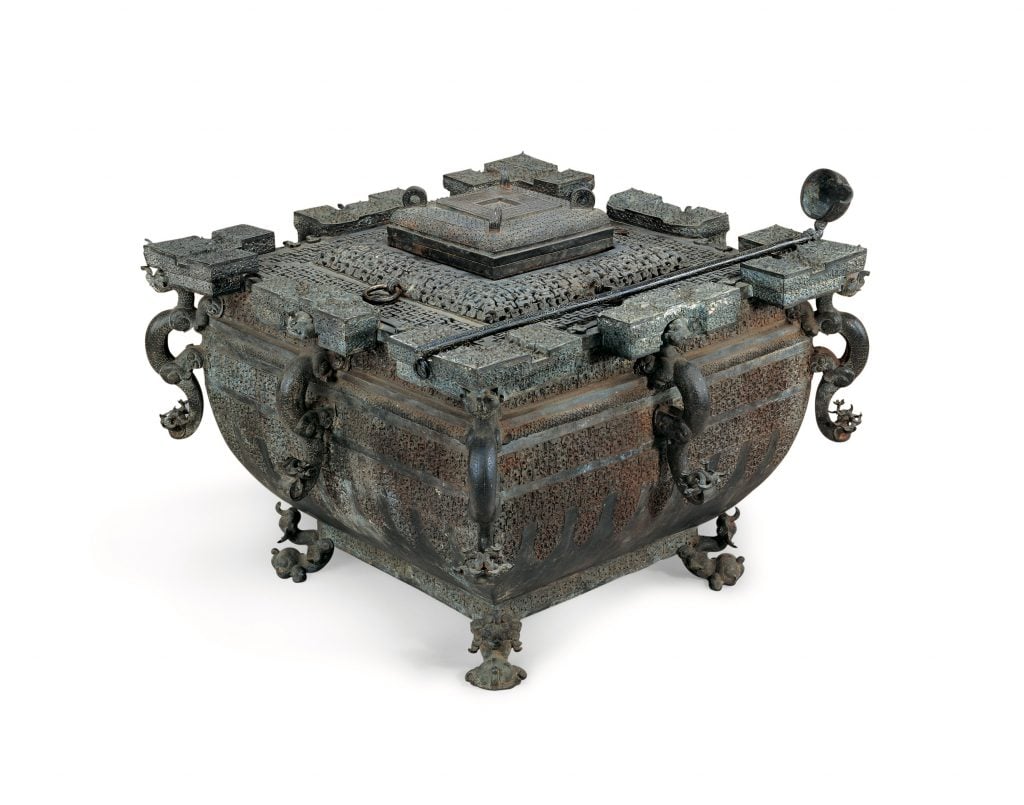
Double-walled square jian-fou from Zhang, Warring States period (ca. 433 B.C.E.) Photo: Hubei Provincial Museum and Asian Art Museum.
The show is the first of its kind in the United States, and features jade and bronze ritual vessels, ceremonial lacquerware, weapons and musical instruments. The objects, more than 150 in total, come from five different Chinese museums that specialize in Bronze Age archaeology, including the Hubei Provincial Museum, the Jingzhou Museum, and the Suizhou Museum.
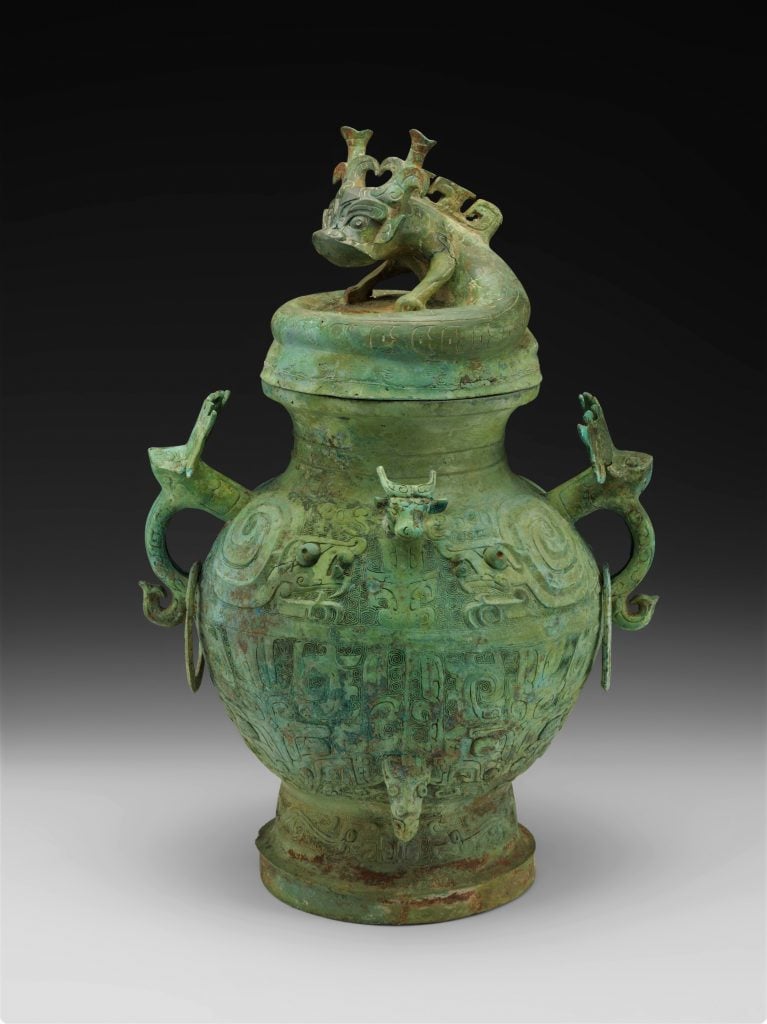
Lei wine vessel with dragon from Zhang in Western Zhou ca. 1050-771 B.C.E. Photo: Suizhou Municipal Museum and Asian Art Museum.
Among the collection are a jade mask dated to 2,200 B.C.E. adorned with two raptors; a bronze drum decorated with 16 snakelike dragons recovered from the tomb of the Marquis Yi of Zeng, built around 433 B.C.E.; and a bronze double-walled wine cooler or jian-fou. Also recovered from the tomb, archeologists believe it was used as a kind of metal refrigerator to preserve millet and ale during hot summers.
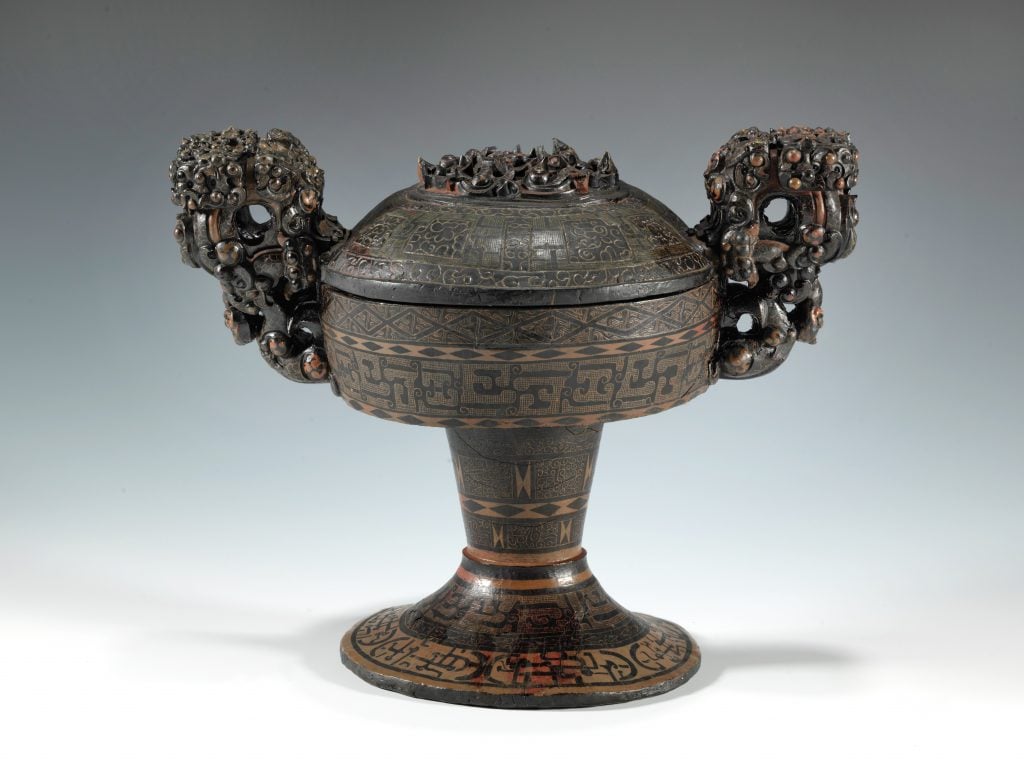
Lidded dou food vessel from Warring States period (475-221 BCE), approx. 433 BC. Photo: Suizhou Municipal Museum and Asian Art Museum.
The majority of the objects come from Zeng and Chu, two mysterious vassal states of the Zhou dynasty in northwestern China. Little is known of their cultures and histories, which were erased when the territory was conquered by the Qin, the founders of imperial China, in 229 B.C.E. Up until that point, the Zhou had been in power for 789 years, making their rule the longest in all of Chinese history.
The tomb of Marquis Yi, discovered in 1978, was a tipping point in Chinese archaeology, described by historian and Asian Art Museum curator Jeremy Zhang as “akin to [the discovery of] Tutankhamun’s tomb, Pompeii, or Knossos.”
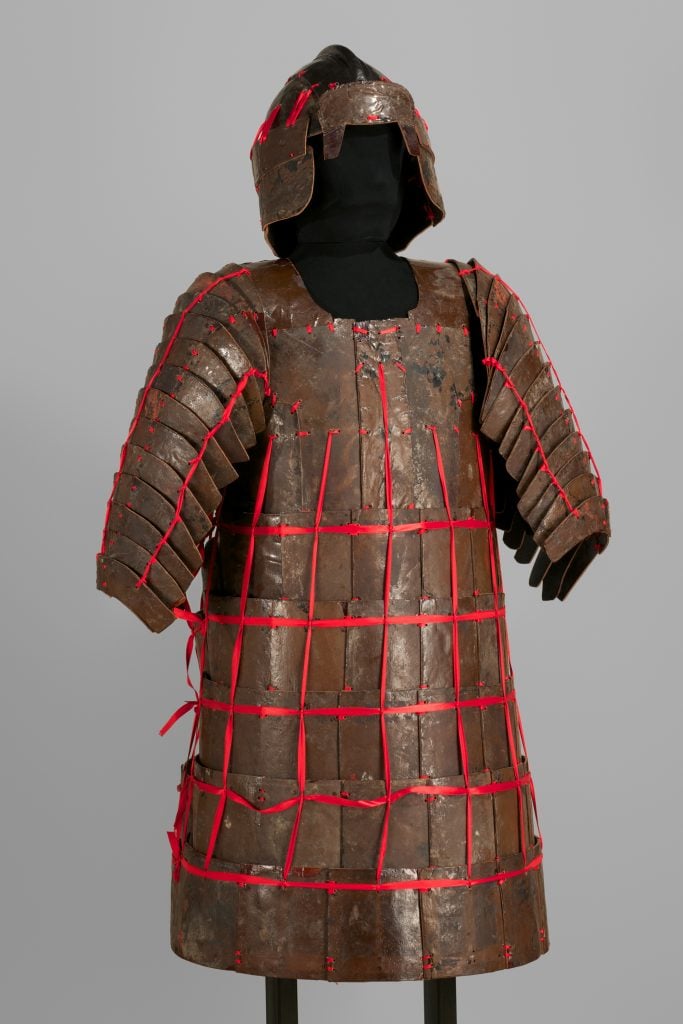
Body armor and helmet from the Warring States period (ca. 300 B.C.E) made of leather, lacquer, and fabric. Photo: Hubei Provincial Museum and Asian Art Museum.
“We are living in what is truly a Golden Age of archaeology—Chinese archaeology that is,” Jay Xu, the Barbara Bass Bakar Director and current CEO of the Asian Art Museum, said in a statement. “There were always obvious gaps in the record that never made sense. We knew which states the Qin conquered—their historians were delighted to write that down—but what we were missing was the artistic evidence connecting the beliefs of older kingdoms with images that proliferated in later dynasties.”
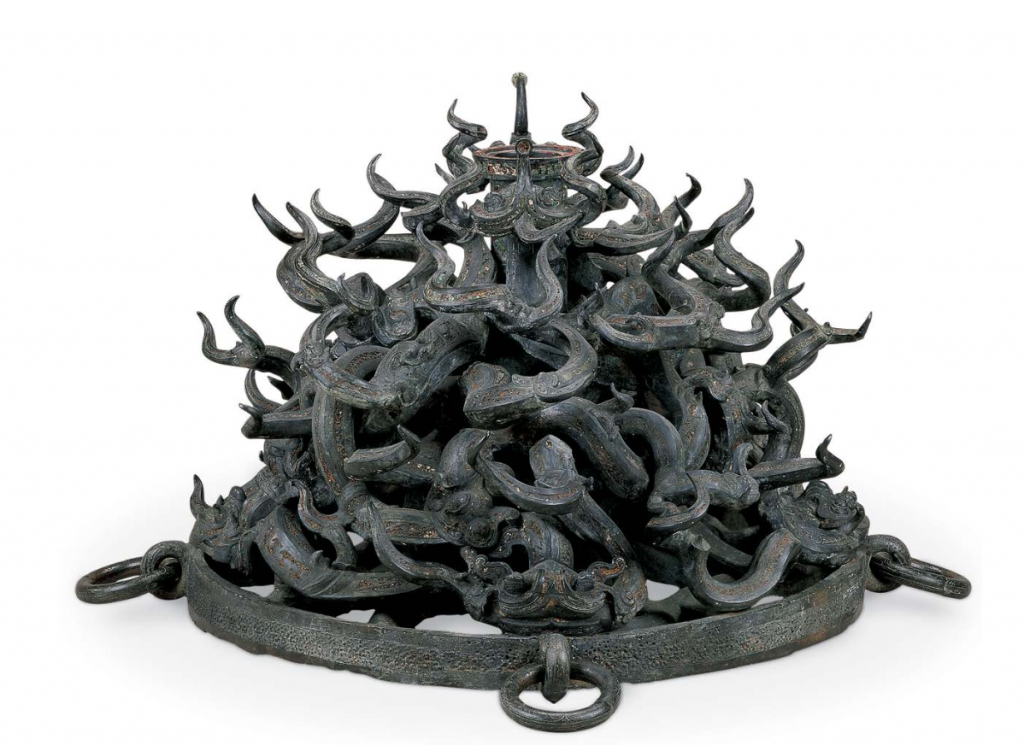
Base of a bronze drum stand, excavated from the tomb of Marquis Yi of Zeng in Suizhou from the Warring States period (ca.433 B.C.E.) Photo: Hubei Provincial Museum and Asian Art Museum.
“Many of the extravagant artworks in ‘Phoenix Kingdoms’ are considered national treasures due to their rarity and their beauty,” added Zhang, who organized the show. “Our original exhibition highlights the importance of the Yangzi River region in forming a recognizably southern style that would influence centuries of Chinese art and religion. We could not be more excited to update our understanding of this historical epoch by inviting our audiences to unlock the glorious mystery of China at the dawn of the first empire.”
“Phoenix Kingdoms: The Last Splendor of China’s Bronze Age” is on view at the Asian Art Museum, 200 Larkin St, San Francisco, California, through July 22.





